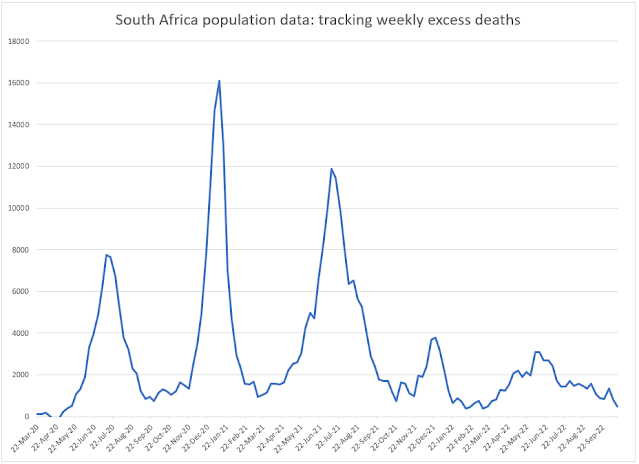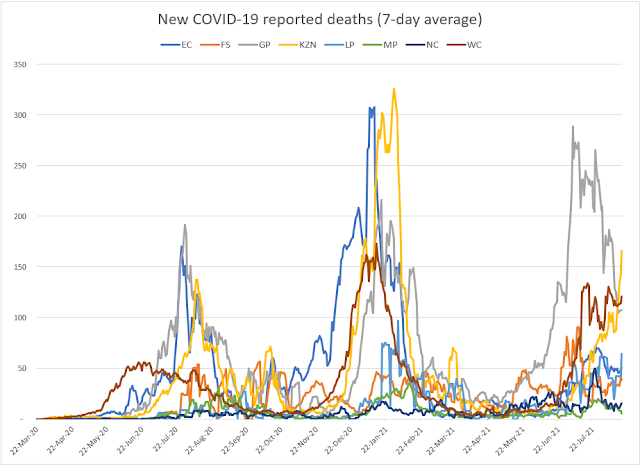New York state of mind
COVID-19 arrived in New York City on 3 March 2020 and the first death was reported some eight days later. For the next two weeks, new infections grew at an exponential rate reaching a peak at 3960 new infections reported on 20 March. Instead of then declining, new infections have plateaued at around the 4000 mark resulting in a total for reported cases on 18 April of 134 492.
Reported deaths peaked a little later with 538 deaths reported on 7 April. Since then the numbers of deaths reported each day has declined but by 18 April a total of 9294 lives had still been lost to COVID-19 in New York.
In an attempt to understand what may be happening in New York, I fitted the NMG model to this data.
The graph alongside shows the model's projection for the reported cases in New York to the end of July 2020.
The cases plateau at a total of just over 200 000.
The model is fitted to the actual data using a reproduction number of 1.14. At this rate, the virus is still spreading in the population but at a rate that is much slower than before lockdown.
The model fit ignores the slowdown in reported cases for the latest period from 14 to 18 April. A better fit taking into account of this slowdown is given in the second graph.
The second graph shows the projected cases plateauing at a lower level of just below 150 000.
This model fit uses a reproduction number of 0.43. At this rate, the virus stops spreading in the population.
The problem with both projections is that the model shows the reported infections picking up again as soon as the lockdown restrictions are lifted.
The NMG model calibration is done in two stages. The first stage fits the lives allocated to the symptomatic reported state in the model to the reported cases as shown above. A second stage then fits the lives allocated to the symptomatic unreported state using the reported deaths.
The NMG model fit in this manner, has the following predictions for the infectious lives living in New York on 18 April 2020:
(https://edition.cnn.com/2020/04/17/health/santa-clara-coronavirus-infections-study/index.html)
With this number of unreported infections, the model predicts that just over 30% of New Yorkers have been infected by the SARS-CoV-2 virus by 18 April 2020. This is not enough to have reached herd immunity, and is the reason why the model shows the reported infections spiking when lockdown is lifted.
22 April 2020
Reported deaths peaked a little later with 538 deaths reported on 7 April. Since then the numbers of deaths reported each day has declined but by 18 April a total of 9294 lives had still been lost to COVID-19 in New York.
In an attempt to understand what may be happening in New York, I fitted the NMG model to this data.
The graph alongside shows the model's projection for the reported cases in New York to the end of July 2020.
The cases plateau at a total of just over 200 000.
The model is fitted to the actual data using a reproduction number of 1.14. At this rate, the virus is still spreading in the population but at a rate that is much slower than before lockdown.
The model fit ignores the slowdown in reported cases for the latest period from 14 to 18 April. A better fit taking into account of this slowdown is given in the second graph.
The second graph shows the projected cases plateauing at a lower level of just below 150 000.
This model fit uses a reproduction number of 0.43. At this rate, the virus stops spreading in the population.
The problem with both projections is that the model shows the reported infections picking up again as soon as the lockdown restrictions are lifted.
The NMG model calibration is done in two stages. The first stage fits the lives allocated to the symptomatic reported state in the model to the reported cases as shown above. A second stage then fits the lives allocated to the symptomatic unreported state using the reported deaths.
The NMG model fit in this manner, has the following predictions for the infectious lives living in New York on 18 April 2020:
- 13 000 symptomatic reported
- 205 000 symptomatic unreported
- 98 000 asymptomatic unreported
(https://edition.cnn.com/2020/04/17/health/santa-clara-coronavirus-infections-study/index.html)
With this number of unreported infections, the model predicts that just over 30% of New Yorkers have been infected by the SARS-CoV-2 virus by 18 April 2020. This is not enough to have reached herd immunity, and is the reason why the model shows the reported infections spiking when lockdown is lifted.
22 April 2020





Comments
Post a Comment